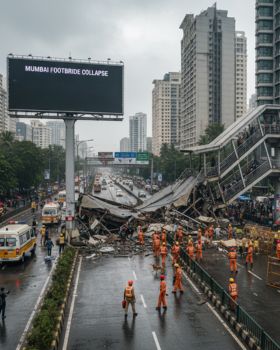
Disclaimer:
This blog post is intended for informational and educational purposes only. The content is based on publicly available information and is not intended to assign blame or liability to any specific individual, organization, or government entity involved in the Fukushima Nuclear Disaster. References to the disaster are made solely to highlight broader lessons in contractor safety and management. Any opinions expressed are those of the author and do not necessarily reflect the views of the organizations mentioned. The information provided does not constitute legal, technical, or professional advice. Readers are encouraged to conduct their own research or consult with qualified professionals before making decisions based on this content.
The Fukushima Nuclear Disaster on March 11, 2011, stands as one of the most severe nuclear accidents in modern history. A powerful 9.0 magnitude earthquake followed by a massive tsunami devastated Japan’s northeastern coast, directly impacting the Fukushima Daiichi Nuclear Power Plant. Operated by the Tokyo Electric Power Company (TEPCO), the plant’s backup power systems were submerged by the tsunami, causing the failure of critical cooling systems. This led to core meltdowns in three reactors, widespread radioactive contamination, and the evacuation of thousands of residents.
What Went Wrong at Fukushima?
The Fukushima disaster was a result of a natural calamity, but several contributing factors could have been mitigated with stronger planning and oversight. Emergency protocols were not sufficient, backup systems were vulnerable, and coordination between multiple contractors was not adequately streamlined. The fragmented communication and manual processes at the time added to the delays in emergency response.
The disaster has since sparked global discussions about nuclear safety, emergency preparedness, and operational resilience.
The Importance of Coordinated Contractor Management
Large-scale facilities like nuclear power plants depend heavily on multiple contractors for construction, maintenance, and emergency services. In 2011, digital contractor management tools were not as advanced or widely adopted as they are today. Improved contractor oversight could have enhanced safety procedures, streamlined communication, and ensured better coordination among all teams working on-site.
While it is impossible to retroactively prevent the natural disaster, having a more organized contractor management process could have helped improve task tracking, emergency readiness, and contractor verification processes. Enhanced systems can offer integrated, centralized access to safety documentation, training records, and emergency contact lists, potentially expediting response efforts during critical moments.
Lessons Learned from the Fukushima Daiichi Nuclear Power Plant Incident
- Backup System Vulnerability: Redundancy and protection against environmental risks are essential for critical infrastructure.
- Inadequate Contractor Oversight: In complex environments, managing contractor qualifications, safety training, and real-time access to worksite information is crucial.
- Communication Gaps: Improved communication and coordination could have supported a more efficient response.
- Emergency Preparedness: Easily accessible emergency plans and timely notifications could have potentially improved reaction times.
Ethical Considerations in Contractor Management
It is important to clarify that contractor management solutions are not designed to prevent natural disasters but could help in improving coordination, documentation, and safety compliance in hazardous environments. These systems support better preparedness by ensuring that all involved parties have immediate access to critical information and that contractors are qualified and well-informed about safety protocols.
The Fukushima tsunami 2011 was an unprecedented natural catastrophe. No system at the time, or even now, could have stopped the natural forces at play. However, structured contractor oversight could have helped mitigate some operational risks and improved emergency response coordination.
Moving Forward: Global Focus on Contractor Management and Safety
Since the Fukushima incident, there has been a growing global emphasis on improving contractor management processes and enhancing workplace safety across industries. Organizations worldwide continue to adopt better systems and practices to ensure that safety protocols are well-maintained, emergency responses are quick, and communication flows efficiently across teams.
Conclusion: How Contractor Software Could Help Improve Safety Oversight
The Fukushima Nuclear Disaster teach.es us that while we cannot control nature, we can control how well-prepared we are. Today’s contractor management software offers robust solutions that could help companies improve contractor coordination, ensure compliance, and maintain up-to-date safety records. These digital tools could help organizations streamline communication, automate critical workflows, and support faster, more coordinated responses during emergencies.
Though no software can fully prevent disasters, having a centralized contractor management solution could help reduce human error, improve situational awareness, and support safer, more efficient worksites. Companies looking to enhance their safety oversight and contractor processes can explore advanced contractor software options to build a safer future.
🔗 Learn more at sheqnetwork.com and transform the way you manage contractor safety today.
👉 Ready to see it in action? Book your free demo here!
Ready to transform? Contact us today at info@sheqnetwork.com or call us at +353 21 4536034 for a personalized demo!



